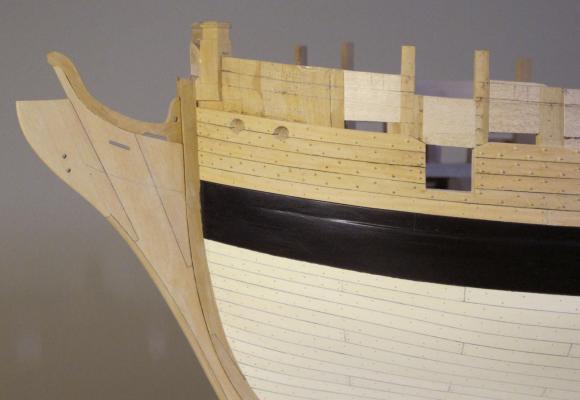-
Posts
13,323 -
Joined
-
Last visited
Content Type
Profiles
Forums
Gallery
Events
Everything posted by druxey
-
Well done: completed on time! More work than you originally thought, eh? I hope the recipient appreciates all you've put into the model.
-

What to do about the DUST
druxey replied to rcmdrvr's topic in Building, Framing, Planking and plating a ships hull and deck
Bill's advice is excellent: you need to both collect dust at source and filter the ambient air in the room/workshop. -
A tilting table is a useful feature at times. Have you checked out the DeWalt 778 (assuming it's available in your part of the world)? Mine has given years of trouble-free service.
-

Zinc-plated hull
druxey replied to Seamus107's topic in Building, Framing, Planking and plating a ships hull and deck
The dull powdery grey color of zinc could easily be simulated with matt grey paint. -
Every time you post your progress, you make me smile. Thanks, Ed!
- 3,618 replies
-
- young america
- clipper
-
(and 1 more)
Tagged with:
-
As noted, this topic has been discussed at length before. Search the archives for the back story. Two of many issues in the AOS series are inconsistency between drawings and inaccuracy of constructional detail. Some books are better than others, but there is no substitute for research from primary (that is to say, contemporary to the time period) sources.
-

mini drill chuck for those small drill bits
druxey replied to AON's topic in Modeling tools and Workshop Equipment
The issue is not necessarily the concentricity of the pin chuck or collets, but the concentricity of the chuck on the power equipment you are using. If the latter is off, the pin chuck or collet in the machine, however accurate, won't be any good. It's the weakest link effect. -
That's working pretty close to the collet face! And nice macro-photography as well, Wefalck.
-
Very sweet, Ed: particularly the bow view.
- 3,618 replies
-
- young america
- clipper
-
(and 1 more)
Tagged with:
-
Ed is correct on this. The draughts show the successive straps foreshortened on the sheer plan.
- 1,215 replies
-
- sloop
- kingfisher
-
(and 1 more)
Tagged with:
-

Chisels or Carving Tools
druxey replied to sfotinos's topic in Modeling tools and Workshop Equipment
So-called palm tools are intermediate in size, Shawn. -
Interesting idea for making blocks, but the grain of the wood runs the wrong way. They may fall apart, especially in smaller sizes. You can slip the tube back on the dowel before cutting the rings, you know!
-
Lovely work, Gaetan! That grotesque carving must have been fun.
- 728 replies
-
- le fleuron
- 64 gun
-
(and 1 more)
Tagged with:
About us
Modelshipworld - Advancing Ship Modeling through Research
SSL Secured
Your security is important for us so this Website is SSL-Secured
NRG Mailing Address
Nautical Research Guild
237 South Lincoln Street
Westmont IL, 60559-1917
Model Ship World ® and the MSW logo are Registered Trademarks, and belong to the Nautical Research Guild (United States Patent and Trademark Office: No. 6,929,264 & No. 6,929,274, registered Dec. 20, 2022)
Helpful Links
About the NRG
If you enjoy building ship models that are historically accurate as well as beautiful, then The Nautical Research Guild (NRG) is just right for you.
The Guild is a non-profit educational organization whose mission is to “Advance Ship Modeling Through Research”. We provide support to our members in their efforts to raise the quality of their model ships.
The Nautical Research Guild has published our world-renowned quarterly magazine, The Nautical Research Journal, since 1955. The pages of the Journal are full of articles by accomplished ship modelers who show you how they create those exquisite details on their models, and by maritime historians who show you the correct details to build. The Journal is available in both print and digital editions. Go to the NRG web site (www.thenrg.org) to download a complimentary digital copy of the Journal. The NRG also publishes plan sets, books and compilations of back issues of the Journal and the former Ships in Scale and Model Ship Builder magazines.



